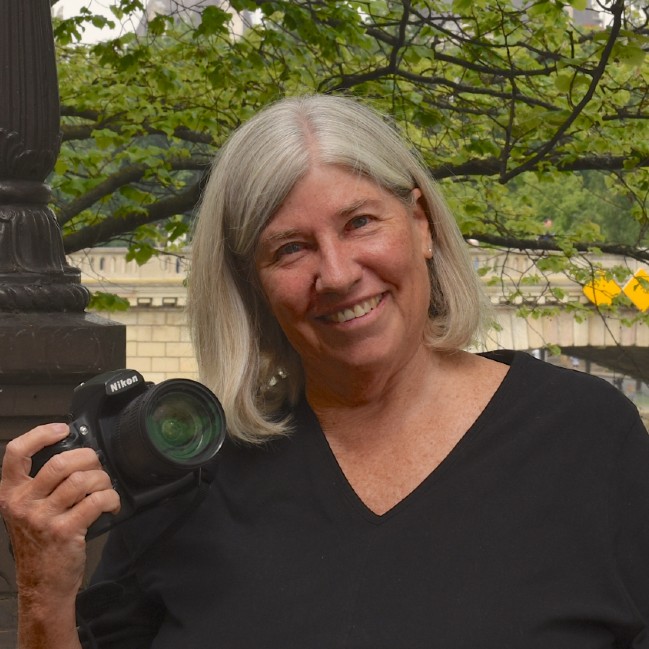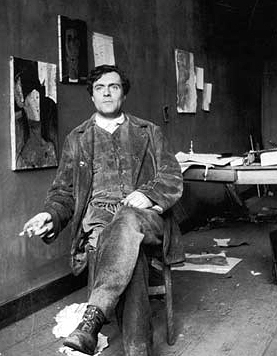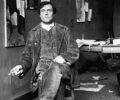A Novel for the New Year: Loving Modigliani
When the lead character dies on page one, somehow you know a ghost must be waiting in the wings.
The protagonist of Linda Lappin’s new novel is Jeanne Hébuterne—artist, model and common-law wife of the brilliant and wild Amedeo Modigliani.
In the opening pages, Modigliani has just died of meningitis at the age of 35, having struggled with tuberculosis and alcohol and drug abuse for most of his life. The 21-year-old Jeanne, pregnant with their second child, grieves for him—the love of her life. Forty-eight hours after Modi’s death, she falls backwards through the window of her parents’ house in sorrow, killing herself and her unborn son.
As with other charismatic figures who die too young—James Dean, Mozart, Janis Joplin, Jim Morrison, Van Gogh, Kurt Cobain, Sylvia Plath, Buddy Holly, Arthur Rimbaud—we wonder what was lost to the world with such tragic early death. We ache for more to their stories. What would have come next?
Lappin feeds that hunger in Loving Modigliani: The Afterlife of Jeanne Hébuterne. Her journey into Jeanne’s life and afterlife and her interwoven time travel with characters real and imagined in the past, present, and future allow us to discover little known details of Jeanne and Modigliani’s life, love, and art. The novel honors their brief time on earth, focusing on Jeanne, whose own talent and strengths were so often overlooked.

Portrait of Jeanne Hébuterne by Amedeo Modigliani (Public Domain via Wikipedia Commons)
No one will ever know why Jeanne fell to her death, although she describes the moment to one of the afterlife functionaries as “leaning back for just an instant, the way you relax into your lover’s arms to take a short nap on a train.” She admits that she did not consider the consequences.
Lappin describes the fantastical world of the afterlife with what I imagine to be uncanny accuracy. I believed almost every detail, although I have never come close to walking toward “the light.” She presents a fascinating boundary-less universe.
Jeanne is suspended above reality with a “lightness of being” that offers special perspective. She can see but cannot be seen. She can hear but cannot be heard. She feels strong physical sensations but has “no more substance than an amputee’s missing limb.” She hears normal sounds “as if from a distance underwater.” She can understand languages that she never knew.
Her senses are no longer hers, but, through sheer force of will, she begins to perceive smells, such as the essence of her life with her lover as she returns to their home and gets close to the brown velvet jacket he wore most days—“a ripe potpourri of tobacco, wine, turpentine, sweat, hashish, and soap.” She can even haunt those who visit the deserted studio at No. 8 Rue de la Grande Chaumière with her ghostly violin playing of Schubert’s Death of a Maiden.
Time and Place Have No Barriers
Lappin deftly takes us from the afterlife to the personalities of the present (and future) who are trying to untangle the mysteries of Jeanne and Amedeo’s life and lost art, including a search for the illusive portrait of the family (The Holy Family of the Circus).
In 1981, an art history researcher meets the flamboyant Madame Rosier (who knew Jeanne and Modi). The plot deepens as we stumble on several suspicious figures who seem to always lurk nearby (and a charismatic art student, Paul, as a romantic thread). The unlikely detective team of Madame Rosier and the art researcher uncover Jeanne’s revealing diaries and then embark on a spontaneous journey from Paris to the Côte d’Azur to Rome to find the missing art.
There are many things to like about this novel. If you’re longing to visit Paris, but can’t travel due to COVID-19 restrictions, this book will not only take you there, but will also bring alive the streets and cafés of Montparnasse, the Marais, and the Île St-Louis in full multi-sensory detail — the history, clothes, sounds, smells, textures, and daily rhythms — of the past and present.
If you’ve heard only the abridged drama of Modigliani and Jeanne as star-crossed lovers who died too soon, you will gain a deeper perspective with the story now told.
If you enjoy a compelling mystery, you will be swept in and will find that not all the puzzles will be easily solved. You will have to rouse your inner sleuth.
If you want desperately to believe in the afterlife, the journey presented will give you hope.
And if you are a supporter of the under-appreciated women artists of their time, you will applaud Lappin’s choice of subject and you’ll love the novel’s ending.
Being Remembered
When Jeanne is dealing with the bureaucracy of the afterlife, she is told that, to be lifted into the world of the immortals (where she must go to be reunited with Modigliani), she must get someone to testify that she should be remembered.
Lappin provides the evidence. Jeanne Hébuterne deserves to be remembered—not just as Modigliani’s model, muse, and lover, but also as an artist.
Linda Lappin is the author of The Etruscan, Katherine’s Wish, Signatures in Stone: A Bomarzo Mystery (winner of the Daphne DuMaurier Award for best mystery in 2013), and The Soul of Place (winner of the creativity gold medal in the Nautilus Awards).
To view the trailer for Loving Modigliani, visit here. To order Loving Modigliani (published by Serving House Books), visit here or, if in Paris, support our independent bookstores such as Shakespeare and Company and The Red Wheelbarrow.

Jeanne and Modi lie together at Pére Lachaise. Photo courtesy of PxHere.
Lead photo credit : Award-winning author Linda Lappin’s new novel
More in Amedeo Modigliani









